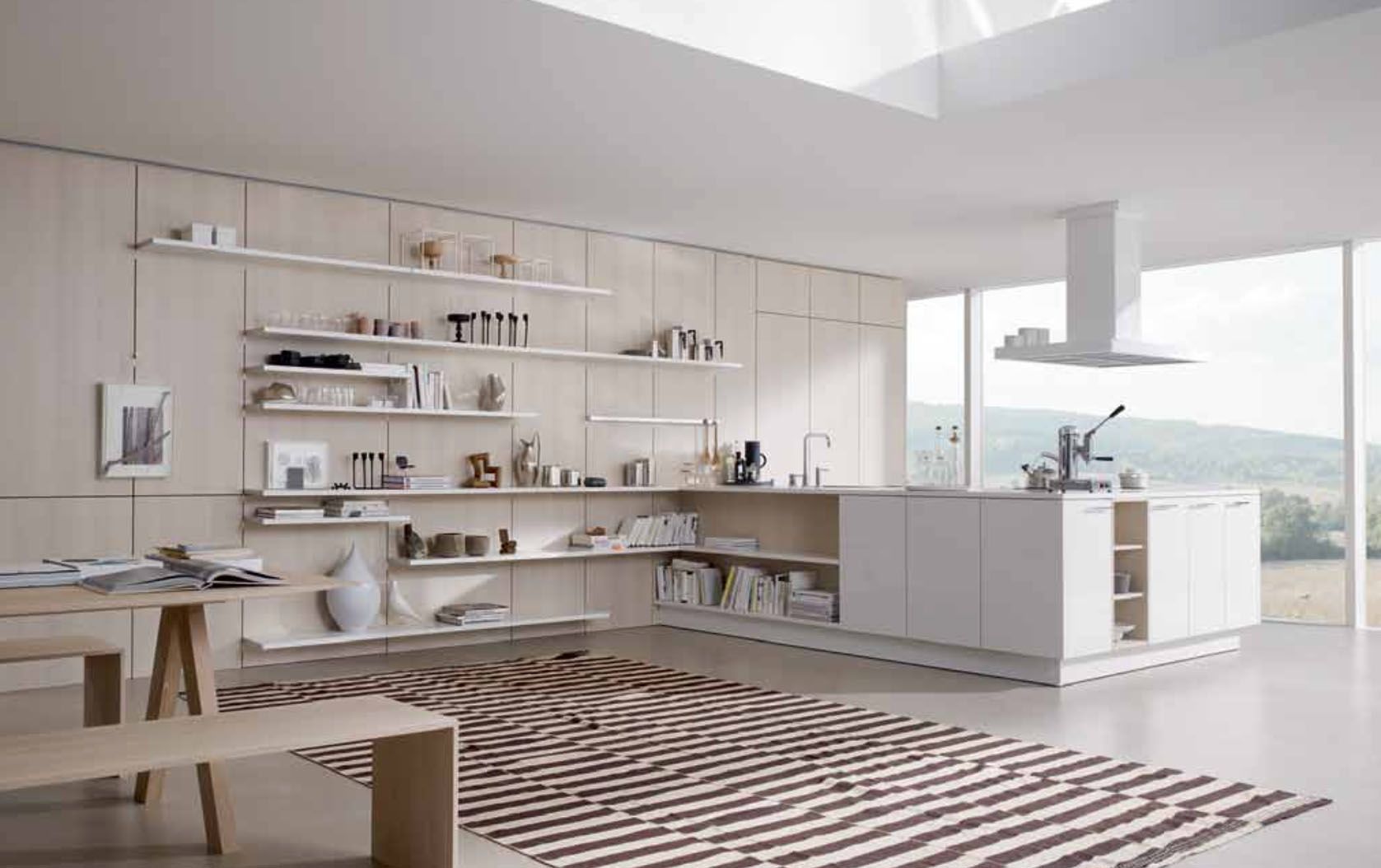Rooms for Living

With kitchens increasingly being seen as the heart of the home, not just places to cook, designers are responding with a new kind of 'living' room.
Words by Sandra Lane in Design & Architecture · Mar 8th, 2014
The new heart of the home, it is being called. This encapsulates the radical change in the status of the kitchen, from a purely utilitarian work area to an open and fluid family-and-entertaining space - a change that has had an impact on every element of design, from materials and finishes to the rationalisation of movement and work flow.
When Siematic presented its new design concept, Floating Spaces, the owner of the company, Ulrich Siekmann, described it as "a near complete integration of the kitchen within the living area". "Our objective is to create fluidity between rooms and allow transitions of functional elements and, in so doing, to achieve continuity around cooking and living as well as technology and aesthetics." That sums up the trend in a nutshell.
At Siematic, the core element is a panel system than seamlessly blends the kitchen and living area; on it, shelves and 'floating' cupboards can be invisibly anchored to provide storage or decorative accents, and arranged at will. Colours and finishes can be varied, to create accents: dark lacquered shelves against pale backdrops, or matt brushed metal against high gloss. Mix-and-match elements such as these free designers from the rigid geometry and single, all-over-colour that have long dictated kitchen layouts and aesthetics.

This taps into another big trend: asymmetry. Cupboards of different heights and widths are arranged at varying heights, allowing for much more artistic licence. Work surfaces are of different thicknesses (for example: Varenna juxtaposes fine, tempered glass with chunky, extra-thick profiles) and set at different heights and angles, not only adding visual liveliness but with a practical purpose - being better suited to different tasks, not to mention people of different heights - and some are even low enough to double as bench seating. Scavolini's tetrix range adds colour to the mix, enabling designers to create a lively effect akin to giant-sized pixellation. indeed, accent colours enable kitchens to remain sleek without the cold clinical-laboratory feel.
As a corollary to colour in the materials, co- loured lighting is increasingly being used to add drama to the design and mood to the ambience - indispensable in the new kitchen - living area. Pinpoint-accurate task lighting focuses on key work areas.
And finally, there is technology: it is being integrated everywhere: 'smart' panels control of everything from lighting and temperature to music and cooking times. The ultimate kitchen sync, you could say.